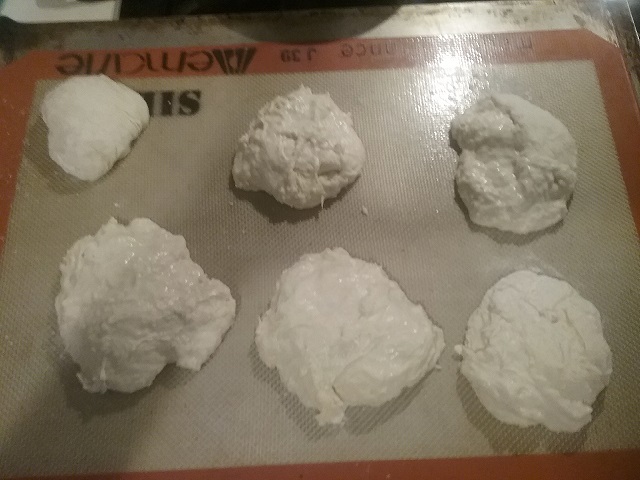This might be an easy "yes" but I have no idea. I was wondering if high hydration doughs need more strength than just all purpose flour. The reason I'm asking is I tried to make a no-knead bread (that I've made several times before) and it was just soupy today. It has been a very long time since I last made it. It was a sticky/soupy mess. I used half all purpose and half bread flour. I wet my hands and that seemed to make it soupy, so I did a few stretch and folds in a cup of all purpose flour and that seemed okay so I let it rest. Then when I tried to do another fold later it turned into a big sticky mess again. More flour and another stretch and fold. I swear I didn't have this much trouble last time. Last time I made this I only did 2 stretch and folds with flour dusted on the top and it was good. This is just a bleepin mess.
Here is the recipe I was following:
- 4 oz All purpose Flour
- 4oz Bread flour
- 1-1/3 cup of warm water
- 1 teaspoon of yeast
- 1 teaspoon of salt
Mix all and let sit until doubled, then put in the refrigerator overnight (8+ hours). I attempted one stretch and fold (or bucket fold, it was just soup) before putting it in the refrigerator. About 24 hours later I pulled it out and dusted the top with flour and poured the blob out of the container onto a heavily floured surface. I tried handling it with wet fingers, but that didn't work so I floured the top and that worked better. I was able to get it into a loose oval shape after a few stretch and folds. It jiggled, like Jello. I let it rest for 10 minutes and tried to do another fold, but I gave up and just cut the darn thing with my dough scraper and plopped the sticky masses onto the pan. It's in the oven.
This is just frustrating. I wanted to work with a slack dough because last time I did this I could feel the dough get stronger better and I really want to learn to work with the dough by feel. I'm a hands on person, so I can read about a subject for a lifetime and still have no clue what the bread is supposed to "feel" like.

High-gluten flour can absorb more water than low-gluten flour. Or, at a given hydration level, high-gluten flour will make a stiffer (or less slack) dough than the same amount of low-gluten flour.
The dough you described has 10.67 ounces of water to 8 ounces of flour. That's a hydration of 133%. Dough made with hydration that high will be soup no matter the flour type.
The wettest dough I’ve worked with so far is a focaccia from Rose Levy Berenbaum's The Bread Bible. Its hydration is 115% and all mixing was done by machine since it was so soupy.
To get some hands-on experience with slack dough, try starting at 75% hydration if using AP flour. You can increase or decrease hydration from there, if you wish. If using bread flour, you might want to start at 80% hydration, instead. There's nothing magical about those percentages; they are just suggestions to get you started.
Paul
Thank you Paul for pointing me in the right direction. You made me think that maybe I did my measuring wrong and I did indeed. I was missing an extra 8 ounces of Flour! I have already baked them and they came out ugly but soft. I will try your suggestions as well. I'm trying to give bread a more serious try, but I think I need to do that when the kids are at school/daycare.